
Metalbasher
-
Posts
485 -
Joined
-
Last visited
-
Days Won
17
Content Type
Profiles
Forums
Store
Gallery
Downloads
Calendar
C-130 Hercules News
Posts posted by Metalbasher
-
-
C-130 “Hulk” demolished after 40 years at Hanscom
By Lauren Russell, 66th Air Base Group Public Affairs / Published September 17, 2020
HANSCOM AIR FORCE BASE, Mass. – The 66th Logistic Readiness Squadron oversaw the demolition of the static C-130 Hercules “Hulk” here Sept. 15.
The 94-and-a-half-foot long airframe has been at Hanscom since 1982, and served as grounds for the 57th and 85th Aerial Port Squadrons cargo loading and offloading training. After the 85 APS deactivated in 2009, “Hulk” was left behind.
“It’s been nothing more than a relic on the base for the last ten years,” said Bill Perkins, 66 LRS Material Management and Fuels Flight chief. “It was time.”
The demolition team completely gutted ‘old 5019,’ as it was referred to by its tail number, before dismantling the entire frame.
Perkins said the shrapnel is off to the scrap yard, and all internal landing gear and equipment was destroyed so it cannot be reused.
“It is a bit of sad ending for a war bird like that one,” said Perkins. “It did its job.”
-
Acft 74-1660, LM # 4592
-
Connecticut State Police troopers escorted a military aircraft across Connecticut roads Friday, attracting an audience along the way.
Police posted photos of the plane, a U.S. Air Force C-130 transport aircraft, on its Facebook page Saturday.
It was loaded onto a tractor trailer in CT, where troopers escorted the heavy cargo to the Rhode Island border. The plane is headed to New Hampshire, according to the State Police Facebook post.
"Many people were surprised to see this plane traveling along the interstate and through Bethel, Thomaston and other towns," police wrote in the post.
Believed to be heading for Pease ANGB, NH to be possibly a aeromedivac trainer.
-
 1
1
-
-
The L3Harris Technologies plant in Waco has won a contract to maintain up to four U.S. Navy and Marine Corps KC-130 aircraft used in air-to-air refueling, though impact of the work on employment levels was not announced.
The sprawling facility at Texas State Technical College airport long has engaged in depot-level maintenance of C-130 military aircraft. But this contract is the first under a new “U.S. Navy acquisition initiative,” according to a press release from L3Harris spokesperson Lance Martin.
The initiative could mean even more work for L3Harris locally, Martin said. Called the U.S. Navy’s Contracted Maintenance, Modification, Aircrew and Related Services program, it allows companies to quickly secure the Navy’s nod to proceed with heavy duty maintenance and support services.
L3Harris uses six hangars at TSTC airport and welcomes applications from students in the school’s aviation programs, Martin said.
Up to four U.S. Marine Corps KC-130J/T aircraft will regularly fly into Waco for a thorough examination, maintenance and repairs that include new paint jobs if necessary, repairs, operational checks and test flights to ensure aircraft readiness. Martin referred to the testing as visual and nondestructive, and said it takes place when aircraft reach certain hours of operation.
L3 and Harris Technologies merged last year to form L3Harris, which is headquartered in Melbourne, Florida. Executive leadership said the merger would create a defense company geared to pursue contracts meeting the U.S. Department of Defense’s vision for more sophisticated warfare systems.
The aircraft the Waco facility will service, “was purchased by the Marine Corps to replace its aging fleet of KC-130F tanker aircraft. The ‘J’ is a primary aerial refueling aircraft for Marine fixed-wing jets and helicopters. The KC-130 Hercules can resupply austere battle zones, provide a Direct Air Support Center, insert ground troops and perform medevac operations,” according to a description featured on Military.com.
The KC-130 has capacity to offload 57,500 pounds of fuel from wing-mounted and external tanks, in addition to a 3,600-gallon aluminum fuel tank that can be removed from the cargo area. It can transfer 300 gallons per minute to multiple aircraft simultaneously, according to Military.com.
The team at L3Harris in Waco has the experience, resources and facilities to conduct maintenance on these planes in a timely fashion, Jon Piatt, vice president and general manager of Integrated Aerospace Systems wrote in the press release.
“We are pleased the U.S. Navy selected us to apply our proven and trusted expertise to augment mission readiness for these critical U.S. Navy and Marine Corps C-130 aircraft,” Piatt said in the press release.
Martin could not provide an exact dollar value on the work and would not speculate on whether it would create additional jobs at the Waco plant.
He said L3Harris Technologies employs about 750 at its Waco site.
L3 last year won a $499 million contract from the U.S. Air Force to perform avionics upgrades on 176 C-130H aircraft in Waco. The award was announced prior to the merger that formed L3Harris Technologies.
Work has continued on that project despite COVID-19, Martin said Tuesday.
L3Harris enjoys about $18 billion in annual revenue and has 48,000 employees and customers in more than 100 countries, the company said.
-
US Air Force gets colour TV upgrade for Litening targeting pods
By Garrett Reim9 July 2020
The US Air Force (USAF) has placed an initial order for colour video feed upgrades to some of its Northrop Grumman Litening targeting pods.
The number of targeting pods to receive upgrades and the value of the contract were not disclosed in Northrop’s 7 July announcement.
Source: Northrop Grumman
Litening pod footage after colour TV upgrade
Litening targeting pods are used by fixed-wing combat aircraft to detect, acquire, automatically track and identify ground targets at long range. The equipment comes with a laser designator and laser rangefinder. It is used by pilots to direct or aim laser-guided bombs, conventional bombs and GPS-guided weapons to targets.
Northrop says colour video footage should help pilots make sense of the battlefield faster.
“Litening’s colour video capability works with the way we naturally see the world to give warfighters in the cockpit and on the ground more-complete situational understanding in less time,” says Ryan Tintner, the company’s vice-president of navigation, targeting and surveillance.
Source: Air National Guard
Northrop Grumman Litening pod on a Lockheed Martin C-130’s wing
Adding colour video to the pod is made easier by the hardware’s modular design, a feature which should enable further upgrades, says Northrop. The upgrade also includes the ability to simultaneously record video feeds from all of the Litening pod’s sensors, including its forward-looking infrared camera, for post-mission analysis. Previously, the video footage the pod fed to pilots was black and white.
In addition to the USAF, the Litening pod is used by the US Marine Corps and several foreign militaries. The equipment is qualified and integrated on the Boeing AV-8B, F/A-18, B-52 and F-15, Fairchild Republic A-10, Lockheed Martin C-130 and F-16. Northrop says it has delivered more than 900 examples of the Litening pod.
-
The ex-Royal Air Force C-130J is presently in the United Kingdom undergoing final checks.
By Joseph TrevithickJune 30, 2020
USN
The U.S. Navy's Blue Angels have finally given us our first full look at the ex-Royal Air Force C-130J Hercules that will take on the role of Fat Albert. The flight demonstration team teased the arrival of this aircraft and its new paint scheme, which will replace the already retired C-130T that they had previously used as their squadron transport and in their performances, earlier this year.
The Blue Angels released the picture of their latest Fat Albert on their Facebook page on June 30, 2020. The aircraft is presently at Marshall Aerospace and Defence Group's facility at Cambridge City Airport in the United Kingdom, where it is undergoing final fit checks.
"Over the next few weeks, team members will conduct a series of maintenance tests, which include an aircraft systems operational check out and a functional check flight, prior to completing the transatlantic flight to the United States," the accompanying Facebook post says. "#BAFans you will notice a couple changes to the paint scheme. The flight surfaces now have yellow tips, similar to our F/A-18s, 2 stripes run down the side of the aircraft and the iconic white top has been changed to a tear drop design."
Some of those changes had already been visible in the images that the Blue Angels had released of the aircraft back in March. In contrast to the scheme used on the previous C-130T, this aircraft's aircraft's paint scheme also has the name of the team written in gold lettering rather than blue and a pair of gold stripes in place of a single thicker one.
The Blue Angels' previous C-130T-based Fat Albert.
"This C-130J model will provide improved logistics support and eventually join the Blue Angels demonstration!" the Facebook post also notes. The team has been without a Fat Albert, which also serves as their dedicated transport from show to show, for more than a year now. Of course, the COVID-19 pandemic has also, unfortunately, severely curtailed their show season for this year, though they did take part in flyovers across the country in support of first responders, healthcare workers, and other individuals on the front lines that crisis.
The Navy formally acquired this ex-U.K. Royal Air Force C-130J as the Blue Angels next Fat Albert in 2019 at the cost of around $29.7 million. The U.K. Ministry of Defense had previously decided to retire all of the RAF's short-fuselage J models, which that service had designated Hercules C5s, based on the recommendations of the country's 2010 Strategic Defense and Security Review. It has now revised that plan to retain one of the Hercules C5s through at least 2021. The RAF will also continue to fly 14 long-fuselage C-130J-30s, which it calls Hercules C4s.
It remains uncertain, especially given the ongoing COVID-19 pandemic, when the Blue Angels' latest Fat Albert will make its public debut. "Please note that our team is practicing social distancing and taking every precaution to maintain mission readiness. Stay safe!" the team's Facebook posted said.
Regardless, it's exciting to finally get a glimpse of the aircraft in its new paint scheme and hopefully it won't be too long before people get to see it up close.
-
The Air Force's last AC-130U gunship, named 'Big Daddy,' made history before a flight this month
Airman 1st Class Hailey Ziegler, US Air Force
Jun 29, 2020, 9:44 AM
The last AC-130U Spooky gunship to retire, aircraft 0128, also known as "Big Daddy," on the flightline at Hurlburt Field, Florida, June 26, 2020. US Air Force/Airman 1st Class Hailey M. Ziegler
- An AC-130U Spooky gunship named "Big Daddy" made history by being the first Spooky to ever receive a black letter initial on its status page before a flight.
- A black letter means the aircraft has no maintenance discrepancies and is a rare feat for any Air Force plane.
- The Air Force is phasing out the AC-130U. Big Daddy will be the last to retire and will be placed in the Hurlburt Field Air Park.
HURLBURT FIELD, Florida — An AC-130U Spooky gunship named "Big Daddy" made history by being the first Spooky to ever receive a black letter initial on its status page before a flight, June 18, 2020.
This was a momentous accomplishment for Air Commandos in the 4th Special Operations Squadron and the 4th AMU.
"A black letter is significant because it means there are absolutely no discrepancies whatsoever on the plane," said US Air Force Tech. Sgt. Mark Lennon, a section chief with the 4th Aircraft Maintenance Unit. "A black letter is when there's no discrepancies on the status page. The crew chief's last name and first initial goes in that place. It shows that aircraft has really been maintained with excellence."
This standard of excellence is only achieved through teamwork.
"It's a huge teamwork effort and accomplishment for everyone," said Lennon. "It takes a lot of hard work and pride to make this happen."
The last Spooky, named "Gunslinger," retired to the boneyard at Davis-Monthan Air Force Base, Arizona, June 26, 2020. However, Big Daddy will be the last to retire and will be placed in the Hurlburt Field Air Park.
Any time an aircraft flies, it could come back with any number of discrepancies or those discrepancies which can be found when maintainers do their inspections.
"Aircraft across the Air Force usually fly with discrepancies, so it's really rare to see a black letter initial," said Lennon. "In my 11 years in service, I've only seen it one other time."
The Spookys have been operational since 1995, providing combat overwatch for 18 of those years. The heavily armed aircraft incorporates side-firing weapons integrated with sophisticated sensor, navigation, and fire-control systems to provide surgical firepower or area saturation during extended loiter periods, at night and in adverse weather.
The mission down range has been taken over by the AC-130J Ghostrider gunships since July 2019. The same aircraft the 4th SOS and AMU will now be working with.
"After 25 years of service, we're closing one chapter and starting another with the AC-130Js," said US Air Force Capt. Hannah Boeman, officer in charge with the 4th AMU. "Talking to a lot of the maintainers at the 4th AMU, it's kind of a bittersweet moment for them. Since most of them have spent a majority of their career working with these aircraft, I know it's sad to see them go."
-
Last Spooky gunships retire at Hurlburt
An AC-130U Spooky gunship with the 4th Special Operations Squadron parks on the flightline after it's farewell flight over Hurlburt Field, Florida, June 3, 2020. This heavily armed aircraft incorporates side-firing weapons integrated with sophisticated sensor, navigation, and fire control systems to provide surgical firepower or area saturation during extended loiter periods, at night and in adverse weather. (U.S. Air Force photo by Airman 1st Class Hailey M. Ziegler)
-
Savannah tail, Wyoming crew flying...
-

By Lt. Col. Paul Hendrickson , Materiel Leader, Agile Combat Support Directorate, CBRN Defense Systems / Published June 05, 2020
JOINT BASE CHARLESTON (JBC), S.C. – One month since the successful flight demonstration of the Negatively Pressurized Conex (NPC) proof-of-concept, a team of experts from across the country continue to work tirelessly to finalize the design and ensure the safety and effectiveness of both the NPC and NPC Lite (NPCL) next phase builds.
The first NPCL was delivered to Joint Base Charleston on June 1 for operational test and the NPC will arrive this weekend. Following successful testing they are projected to immediately begin operations.
The NPC is a rapid prototype project developed in response to the United States Transportation Command’s (USTRANSCOM) Joint Urgent Operational Need (JUON) requirement issued on March 28, 2020 for high capacity immediate transport of COVID-19 infected personnel.
Under the direction of the Air Force Program Executive Office (PEO) for Agile Combat Support (ACS), a team led by the Air Force Chemical Biological Radiological and Nuclear (CBRN) Defense Systems Branch and the Joint PEO CBRN Defense drafted the requirements, awarded an other transactional authority (OTA) agreement to the contractor team comprised of UTS Systems, Highland Engineering Inc, and Delta Flight Products and delivered the proof-of-concept NPC in less than 21 days.
Following a series of tests and the successful demonstration flight of the NPC on April 30, and with the recommendation of PEO ACS, the Commander of Air Mobility Command (AMC) made the decision to proceed with the procurement of the NPC for Inter-Theater Airlift on the C-17 and C-5 aircraft; and the NPCL variant for Intra-Theater Airlift on C-130, C-17 and C-5.
Beginning with a proof-of-concept prototype and ending with a fieldable system that is safe and meets the JUON’s requirements presented a major challenge.
Teams from Air Mobility Command and the Air Force Lifecycle Management Center’s (AFLCMC) Engineering and Technical Management/Services Directorate, C-17 System Program Office (SPO), C-5 SPO, C-130 SPO
s, and Human Systems Division worked directly with the NPC/NPCL program team and contractor to rapidly iterate on the systems’ designs, to compress the normally months to years interwoven engineering, medical, safety, testing, financial, scheduling, and air worthiness processes into less than 30 days.Working these separate streams at the same time was not for the faint of heart.
“Helping a non-standard defense contractor understand the stringent requirements for air worthiness required an all-hands on deck and an outside of the box teaming strategy,” said Robert David, Chief Engineer for the C-17 SPO. “Having our engineers and subject matter experts work directly within the finalized design of the NPC/NPCL allowed for concurrent development, production and certification.”
“We worked with the contractors to develop safer seating systems for patients and tested them here at the 711th Human Performance Wing’s vertical and horizontal crash test facilities,” said Dr. Casey Pirnstill, a research Biomedical Engineer at Air Force Research Laboratory. “We even had a local church donate personal protective equipment and hand sanitizer so the guys could work in proximity to build the test fixtures.”
This rapid and outside of the box thinking for design was driven by AMC’s continued demand for the NPC and NPCL to facilitate COVID-19 aeromedical evacuation operations around the globe. While utilizing the lower capacity Transport Isolation System (TIS) and other methods, USTRANSCOM has already transported more than 46 patients and expects the demand to continue to ramp up.
“We had to rapidly understand the inherent limitations we would experience in this rapid development, and help buy down risks to make the system both airworthy as well as safe for operations,” said Peter Christiansen the Chief Engineer for the C-130 in AFLCMC/WLN. “We sent four members of the C-130 team to Howell, Michigan to work directly with the NPCL build contractor Highland Engineering to ensure the delivered NPCL would meet all safety requirements. Seeing the team come together and work this rapid development was a huge testament to teamwork and made it all possible.”
“One of the biggest hurdles to this process was designing and validating the overall structural integrity of the system through the development of Finite Element Models (FEM) and conducting the associated analysis on these,” added Sean Mortara, a structural analysis technical expert with AFLCMC/EN-EZ. “Working directly with both NPC and NPCL contractors to develop and modify these designs and models during production was definitely outside of the box, but made it possible to deliver these systems in 30 days.”
“Our team had to pull together the entire package of risks and requirements for a military flight release, showing that the risks were addressed and this system was ready and safe to fly on military aircraft,” added Rebekah Less a member of the Human System Divisions Sustainment Branch. “On top of that, we had to develop a sustainment, training, and maintenance package, to ensure the system when it enters operations at the end of June will be ready for the operators to execute missions with confidence.”
The NPC is scheduled for 10 days of ground tests followed by an Operational Utility Evaluation (OUE) C-17 flight. The NPCL is scheduled for 21 days of ground tests on three different C-130 to include its OUE on a C-130J mid-June. Follow on evaluations for the C-17 and C-5 aircraft will follow for the other configurations at a future date.
With the conclusion of these OUEs, the systems will enter service and be available to transport COVID-19 patients around the globe for USTRANSCOM. Subsequent rapid delivery of additional NPC and NPCL units will begin at the end of June, and 30 of each system are expected to be produced.
Testing will be conducted by a joint team comprised of members of the Air Force CBRN Branch, 28th Test and Evaluation Squadron, Air Force Operational Test and Evaluation Centers (AFOTEC) Det 2, 417th Flight Test Squadron, aircraft SPOs, AFRL, AMC/SG, AMC/A3V, Army Combat Capability Development Directorate, Army Public Health Center and additional team members.
“This was not how I expected to spend the month of May, but working hand in hand with the contractor team of UTS, HEI and DFP in place at their location in Howell, MI has been a sprint marathon,” said Matt Kilmer from the C-130 Program Office. “But the overwhelming commitment from both the government and contractor teams has been amazing to watch. Because these teams came together and worked diligently, we will be able to field this critical capability to the warfighter in an amazing short period of time.”
“Providing an unrivaled mobility capability for the nation and our allies is the reason we come to work every day,” commented Col. Scott Ekstrom, Senior Materiel Leader for the C-17 Program Office. “The demand for urgent solutions to current problems is constant. Supporting an effort like the NPC/NPCL development showcased our teams working together to rapidly effect the safety and security of our Airmen. I couldn’t be prouder of the team.”
-
US Air Force tests dropping cruise missiles from ramp of cargo aircraft
By Garrett Reim28 May 2020
The US Air Force (USAF) is moving forward with an experiment to drop cruise missiles from the back ramp of cargo aircraft.
The Air Force Research Laboratory and Air Force Special Operations Command (AFSOC) successfully tested releasing mock cruise missiles on 28 January 2020 from the cargo ramp of the Lockheed Martin MC-130J Commando II, the service says on 27 May.
Source: US Air Force
Mock CLEAVER cruise missile being dropped from MC-130J
Dropping cruise missiles from cargo aircraft is considered a cheaper alternative to designing a clean-sheet bomber. USAF leaders have recently discussed the possibility of developing an “Arsenal Plane”, a new bomber which would carry large numbers of cruise missiles into combat.
As part of the January experiment, munitions were stacked upon wooden pallets, called Combat Expendable Platforms, and rolled off the back of the MC-130J.
“AFSOC aircrew released five [Combat Expendable Platforms] rigged with six simulated munitions, the same mass as the actual weapons, including four Cargo Launch Expendable Air Vehicles with Extended Range (CLEAVERs) across a spectrum of low and high altitude airdrops,” says the USAF. “These long-range, high precision weapons destroy moving and non-moving targets.”
The Phase 1 demonstrations were conducted during three airdrops at Dugway Proving Ground, Utah.
CLEAVER is an experimental cruise missile. The USAF envisions cargo aircraft, such as the C-130 or Boeing C-17 Globemaster III carrying the weapons to the edge of the air battle, and then dropping and firing the missiles deep into enemy airspace.
The weapons would be networked with each other and other aircraft. The missiles would be semi-autonomous, and accompany unmanned air vehicles and fighter jets on combat missions, the service says.
The USAF wants the missiles to swarm and overwhelm a target. In particular, long-range cruise missiles are seen as a means to destroy military targets while remaining beyond the reach of China and Russia’s anti-aircraft missile batteries.
In future demonstrations, AFSOC plans to test different variants of CLEAVER, including glider and powered types, as well as fully functional missiles with warheads and terminal guidance systems, it says.
-
The acft should have come with all the caps/plugs. Would think they are listed in the TO too. I know LMCO uses Sesame Technologies Inc (STI) as a supplier for their caps/plugs.
-
-
All the LS extrusions are detailed in the 1C-130A-3, to include detailed pix and dimensions of each LS extrusion.
-
LS4211 is the LMCO part number for raw stock extrusion. It could be an L angle, T angle, round stock etc. For example, the crew door longeron (runs for to aft at the top of the crew door frame) has an LS #. That equates to the stock...actually an L angle, 1 1/2" by 3" with the 3" side being tapered from .125" to .060" and 12' long or something like that. Far more easier to order the LS material than to try and locally fabricate.
-
The first production Air National Guard C-130H3 with the #CollinsAerospace NP2000 eight bladed propeller completed a functional check flight and was released back to the 152nd Airlift Wing, Reno, Nevada. The Air Reserve Component has been working for the past six years to bring this capability to the field and it's great to see production aircraft now in service. This particular aircraft has the large orange “8” in reference to the Modular Airborne Fire Fighting System (MAFFS) Aircraft #8. The NP2000 brings increased safety, performance, and maintainability to not only the airborne firefighting mission, but normal airdrop and air land missions as well. Thanks to Chris Swadener for the photos. This upgrade, along with the #RollsRoyce T-56 Series 3.5 engine upgrade, and the #L3Harris Avionics Modernization Program Increment 2 (AMP-2) beginning in Waco, built on the highly successful Compass Call avionics upgrade, offers the Air Force cost-effective options to ensure the ARC legacy C-130 fleet remains relevant and viable for both domestic and overseas missions.
-
Seen it done in the field but work performed by depot/CLSS personnel. Even then, somewhat tricky as field units are all equipped differently (machine shop/sheet metal tooling etc).
-
Air Force Reserve Receives First HC-130J Combat King II
Hercules history was made on April 2, when a crew from the 920th Rescue Wing (RQW) from Patrick Air Force Base, Florida, accepted delivery of the U.S. Air Force’s Reserve first HC-130J Combat King II search and rescue aircraft. This HC-130J will be operated by the 39th Rescue Squadron (RQS), which is part of the 920th RQW.
These Reservists are long-time operators of legacy HC-130 P/N Combat King combat search-and-rescue aircraft, flying and maintaining HC-130s since the 1960s — using HC-130s to save more than 3,000 lives. The HC-130J is the sole dedicated fixed-wing personnel recovery platform operated by the Air Force, Air Force Reserve and Air National Guard.
The 920th RQW and 39th RQS also have the distinction of being the Air Force Reserve’s only HC-130J operators and will eventually have an HC-130J fleet to support mission requirements.
Like others in the U.S. Air Force Rescue community, the 920th RQW and the 39th RQS live by the motto, "That Others May Live," which reflects the mission of supporting combat search and rescue anywhere in the world. These crews rely on HC-130s to also extend the range its HH-60 Pave Hawk combat search and rescue helicopters, which were manufactured by Lockheed Martin’s Sikorsky business in Stratford, Connecticut.
Often tasked for airdrop, airland, and helicopter air-to-air refueling and forward-area ground refueling missions, the HC-130’s mission capabilities also include humanitarian aid operations, disaster response, security cooperation/aviation advisory, emergency aeromedical evacuation and noncombatant evacuation operations.
“As we salute one fleet for a lifetime’s worth of work, we are also excited to commemorate a new era with the arrival of the 920th’s first HC-130J Combat King II,” said Rod McLean, vice president and general manager, Air Mobility & Maritime Missions at Lockheed Martin. “This HC-130J provides the 920th’s Citizen Airmen with increased power, capability and performance to continue to support critical missions close to home and around the world.” -
Doing well for now but the craziness is ramping.
-
 1
1
-
-
Credible Sport C-130 was at Robins but has since been moved to a location up in New England somewhere (forget). There is a thread on this board about the flatbed journey though.
-
End of the line
Air Force C–130 makes final trip—by road
March 19, 2020 By Mike CollinsIt’s not very often that you hear the command, “Pull chocks,” on a city street, miles from the nearest airport. But the phrase was shouted several times in the early morning hours March 14, as a retired U.S. Air Force C–130H Hercules was pulled—on its own wheels—some 7.5 miles through the streets and highways of Frederick, Maryland, to its final assignment.
Rosemont Avenue traffic is stopped for a U.S. Air Force Lockheed C-130H Hercules aircraft during an overnight move from Frederick Municipal Airport through city streets to Fort Detrick. Photo by David Tulis.The four-engine Air Force turboprop transport, built in 1974, was flown into Frederick Municipal Airport in September 2019. Over the past six months it had become a fixture at the busy general aviation airport that is the home of AOPA.
In October, the engines and propellers were removed and shipped to Dover Air Force Base in Delaware. Disassembly of the fuselage began in mid-February as the outer wing sections, vertical and horizontal stabilizers, and other parts were removed to make the Hercules both smaller and lighter for its final journey. The aircraft, with a maximum takeoff weight of 155,000 pounds, was lightened significantly but still weighed more than 50,000 pounds for the move.Finally it was towed away in the wee hours to its final assignment, with the Air Force Medical Evaluation Support Activity (AFMESA), which operates a testing facility on Fort Detrick—a U.S. Army Medical Command garrison on the west side of Frederick that plays a key role in biological research. AFMESA’s mission, testing medical technology and devices to ensure they meet the military’s needs and can survive the rigors of deployment, is unique within the U.S. military. The AFMESA testing site already includes a complete 10-bed Expeditionary Medical Support Hospital, a 44,000-square-foot test pad, and other testing facilities that simulate many of the conditions medical airmen experience in the field.
 Ken Wrobleski of Legacy Aerospace and Defense monitors obstacle clearance as a U.S. Air Force Lockheed C-130H Hercules aircraft is rolled under traffic lights on Rosemont Avenue in Frederick, Maryland, en route to Fort Detrick. Photo by David Tulis.
Ken Wrobleski of Legacy Aerospace and Defense monitors obstacle clearance as a U.S. Air Force Lockheed C-130H Hercules aircraft is rolled under traffic lights on Rosemont Avenue in Frederick, Maryland, en route to Fort Detrick. Photo by David Tulis.At AFMESA the Hercules will be reassembled, except for its engines and propellers, and used to test equipment and procedures. A speaker system will be installed to replicate the sounds usually experienced in a C–130, both in flight and on the ground.
But first it had to get there. The move followed a circuitous route that had been carefully evaluated to ensure sufficient height clearance between the fuselage and overhead obstructions and was scheduled to begin at 2 a.m. to minimize traffic disruptions.
This move was unusual because the airplane was being towed on its own wheels, explained Charles White of moving contractor Whites Aircraft Salvage and Parts. He has moved and dismantled many large aircraft, including more than 40 C–130s, some of which have been repurposed to train paratroopers or loadmasters. “It’s good to reuse them,” he said, adding that in this case the relatively short distance and clearance issues made towing the Hercules practical.
White got into the aircraft transport and salvage business by accident. “About six weeks into retirement I realized this is what I want to do,” he said of the chapter in his life that will soon close. “I’m retiring at the end of the year and turning the company over to Tom Stone,” he said. “At 74 I’m ready to go fishing.”
Connecting a safety chain caused a slight delay but the C–130 was rolling by 2:25 a.m. Slowing down for tight clearances, the aircraft traveled as fast as 10 to 20 mph on open stretches of road. About 4:15 a.m. the caravan—a truck tractor pulling the Hercules with a towbar, several trucks and trailers with additional crew and support equipment, and a Maryland State Police escort—reached a very tight, descending exit ramp from U.S. Route 15 South to Rosemont Avenue. It had been identified as the most challenging segment of the journey for the 97-foot-9-inch-long fuselage, and White and some of his crew walked the ramp again the day before the move. Navigating this short stretch of road took an hour and a half. During the descent the towbar detached from the truck and had to be reattached.
A second truck was connected to the rear of the airplane with safety chains to provide stopping power, and White had two people in the aircraft itself—one person in the pilot’s seat to apply the brakes if necessary, and an observer riding in the roof hatch to monitor clearances. Only enough hydraulic pressure remained in the system to apply the brakes six times, White noted. Especially on the steep grade, chocks were used to ensure the Hercules didn’t move unintentionally. It was apparent that White has moved many of the big transports.
About 5:46 a.m. the caravan reached the Montevue Lane gate to Fort Detrick’s Area B, where AFMESA is located. There, the movers reconfigured to pull the Hercules backward onto the base, so it could more easily be positioned in its final parking spot. To steer the hulking airplane through the narrow gate, crew manhandled the heavy towbar. The transport rolled onto the Army installation at 6:27 a.m.
The C–130H logged more than 24,000 flight hours and had most recently served with the Ohio Air National Guard, based at Mansfield Lahm Regional Airport in Mansfield, Ohio. It was named Spirit of Clear Fork Valley, honoring an area of southern Richland County, Ohio, that is home to a number of members of its previous unit, the 179th Airlift Wing. However, it’s not the first C–130 to wear that name.
On October 16, 2014, Jenny Carr—wife of then-Butler, Ohio, Mayor Kevin Carr—revealed the script tribute over the crew door. But that aircraft carried the serial number 81-0629, and by summer of 2019 that aircraft apparently had been transferred to the 189th Airlift Wing in Little Rock, Arkansas, where it serves as the wing commander’s flagship aircraft. The aircraft delivered to Maryland for the AFMESA assignment—and now named Spirit of Clear Fork Valley—is 74-1660 which, interestingly, carried in its cockpit a set of custom reflective cockpit window covers made by industry supplier Bruce's Custom Covers embroidered with ship number 629, reflecting the original Spirit of Clear Fork Valley.
Little history of C–130H 74-1660 was available from project managers, but information available online revealed that it was assigned to Yokota Air Base in Japan, and that its duties took it to locations including Hazrat Shahjalal International Airport in Dhaka, Bangladesh, and Ben Gurion Airport near Lod, Israel.




20_c130_hercules_0318f_108_16x9.jfif 20_c130_hercules_0318f_112_16x9.jfif 20_C130_Hercules_0318F_116.jfif
-
USN converted many legacy acft to NP2000 props as well due to the lack of the 4 balded props because overhaul issues and the production line at Robins coming to a stop until all the revisions (that came out of the investigation of the KC-130T accident) could be incorporated into production. People don't realize that after that accident, while the USAF continued to fly/operated at elevated risk levels, the USN halted all legacy C-130 ops pending new props etc. Hence the reason the USN opted to jump to the NP2000 and get back to operating.
-
Lockheed Martin Aeronautics has been awarded a firm-fixed-price contract, worth around $16 million, from the U.S. Air Force for the C-130J center wing box replacement program.
This contract provides for 14 C-130J Super Hercules enhanced center wing boxes and 14 component kits. Work will be performed in Marietta, Georgia, and is expected to be complete by March 30, 2027.
This award is the result of a sole-source acquisition. Fiscal 2019 procurement funds for the contract amount are being obligated at time of award. The U.S. Air Force Life Cycle Management Center (AFLCMC) at Robins Air Force Base, Georgia, is the contracting activity (FA8504-20-C-0002).
The C-130J Super Hercules is a comprehensive update of the legacy C-130 Hercules tactical transport aircraft, developed by the American company, Lockheed Martin.
The C-130J features upgraded technology not found on older model C-130s, including improved turboprop engines, propellers and digital avionics. The J-model has greater range, higher maximum speed and shorter takeoff and landing distances than previous C-130 models.
The C-130J is a proven aircraft, with more than 400 having been delivered to over 21 nations, including the United States, United Kingdom, Australia, and Canada.
-
Report: C-130 crashed after clipping tree during retardant drop
By Reuters |
February 27, 2020 at 4:45 p.m.
By Jamie Freed | Reuters
SYDNEY – A C-130 tanker plane that crashed and killed all three Americans on board while fighting fires in Australia last month hit the ground shortly after making a two-second fire retardant drop at an altitude of 200 feet, investigators said on Friday.
In a preliminary report into the crash, the Australian Transport Safety Bureau (ATSB) said after the drop, the aircraft was flying at a very low height with its left wing down and it hit a tree before crashing into the ground, leading to a post-impact fuel fire.
No distress calls were made to air traffic control before the crash and an emergency dump of fire retardant had not been activated, according to the report, which said the nearby Cooma-Snowy Mountains Airport forecast warned of high winds, reduced visibility and severe turbulence at altitudes below 5,000 feet above ground level before the crash.
The preliminary report contained factual information and the sequence of events as understood so far but did not determine the cause, which remains under investigation.
“An investigation of this nature and complexity may take more than 18 months to complete,” ATSB Chief Commissioner Greg Hood said in a statement. “However, should any safety critical information be discovered at any time during the investigation, we will immediately notify operators and regulators, and make that publicly known.”
The crash of the plane, operated by private Canadian firm Coulson Aviation, killed U.S. military veterans Captain Ian H. McBeth, 44, of Great Falls, Montana, First Officer Paul Clyde Hudson, 42, of Buckeye, Arizona, and Flight Engineer Rick DeMorgan Jr., 43, of Navarre, Florida.
The cockpit voice recorder was recovered but investigators said the data was not useful because all of the audio was from a flight that was operated in the United States in 2019.
The aircraft had been based there before coming to Australia to help during a bushfire season that killed 33 people, charred nearly 12 million hectares (29.7 million acres) of land and wreaked billions of dollars in damage.


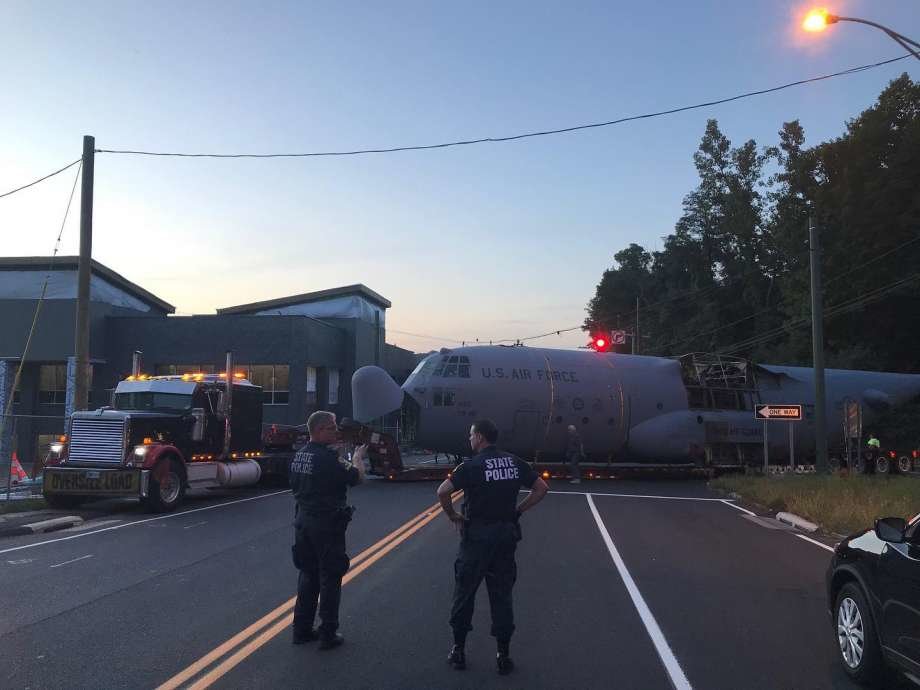
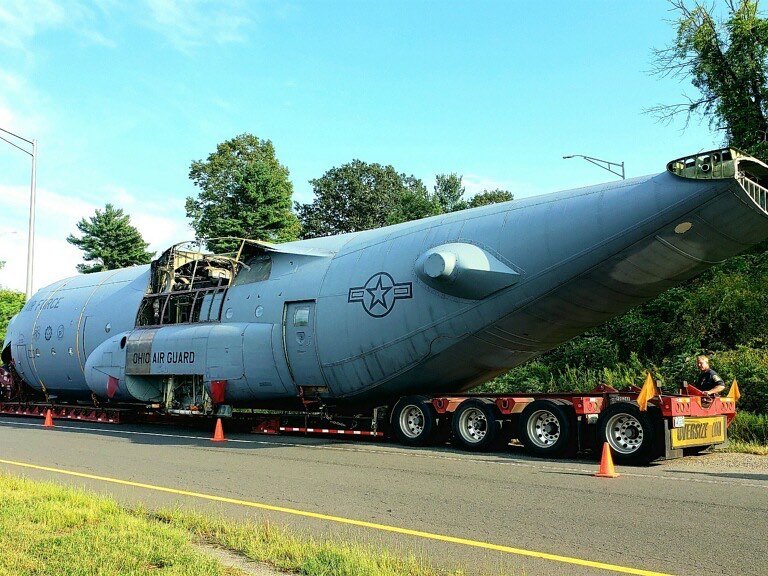
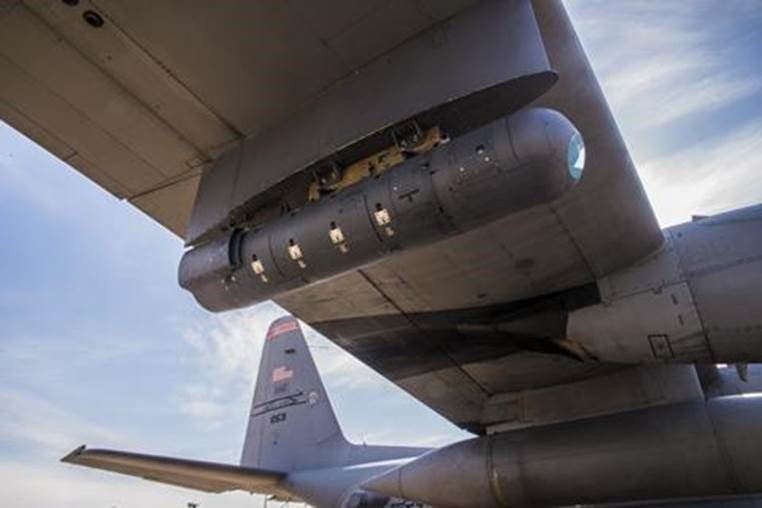
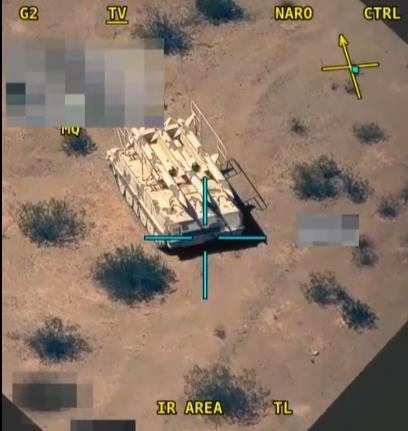
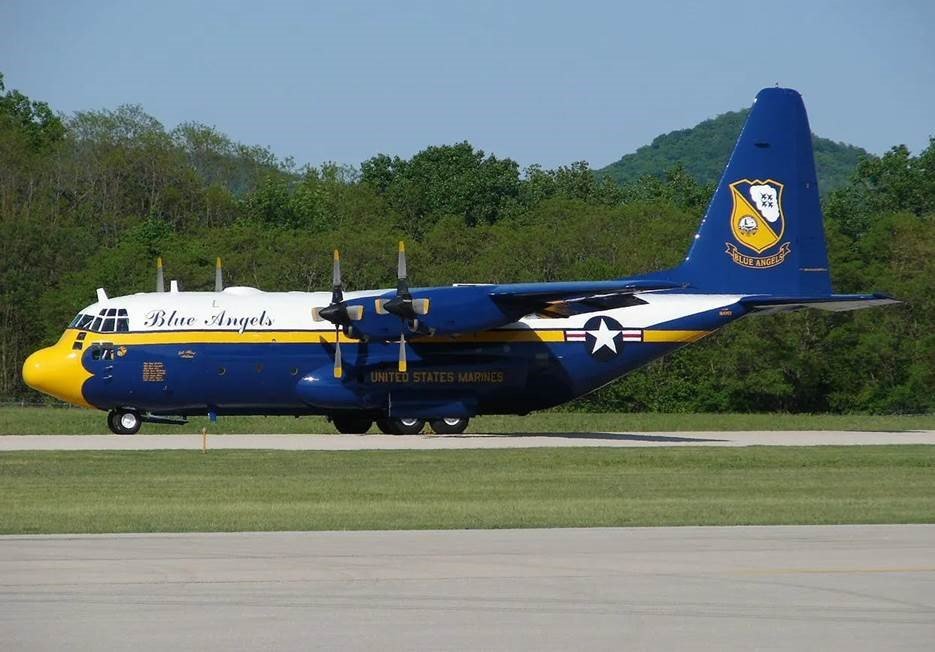
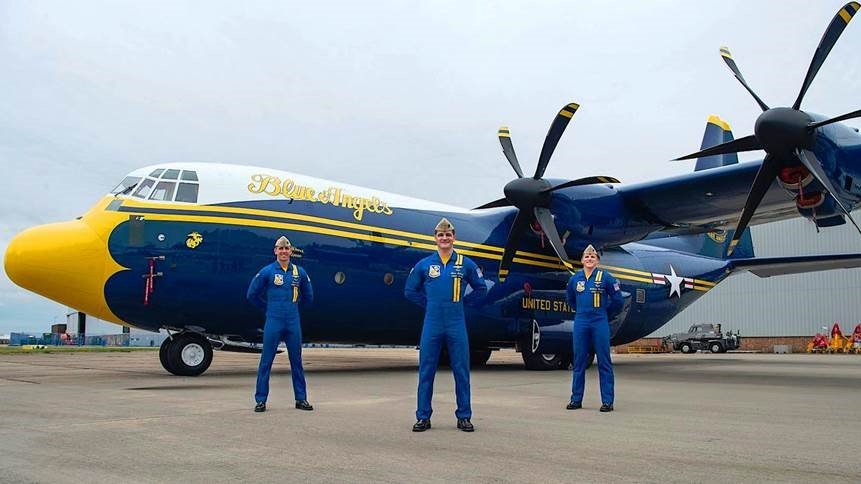
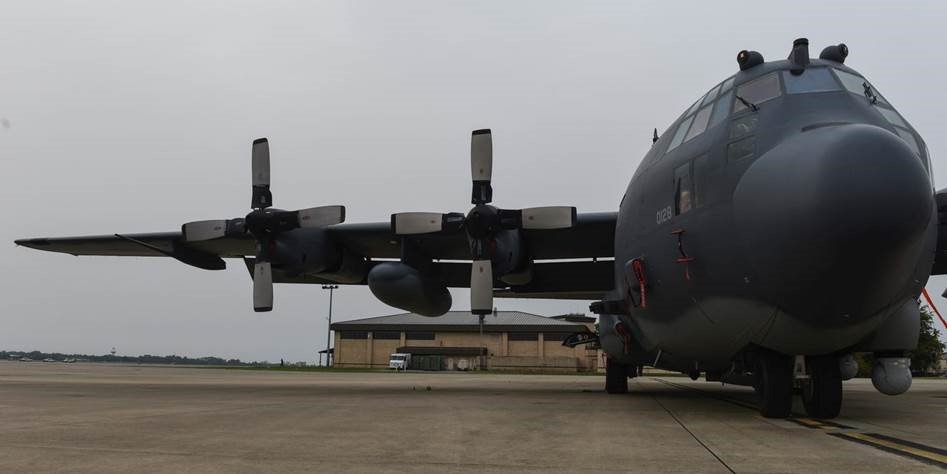
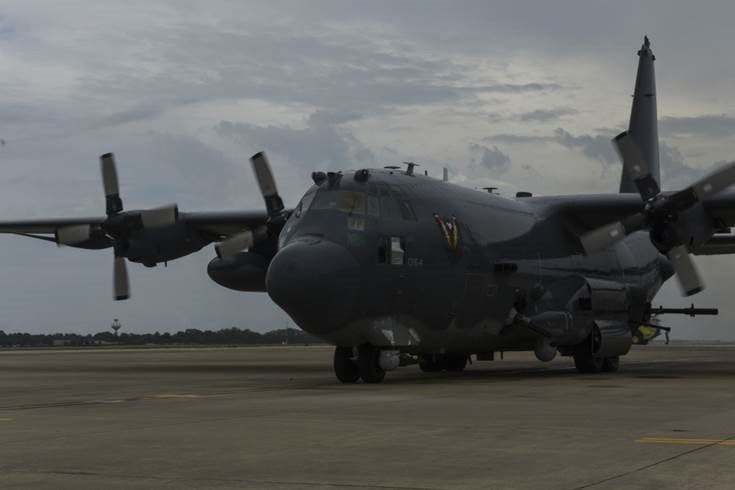
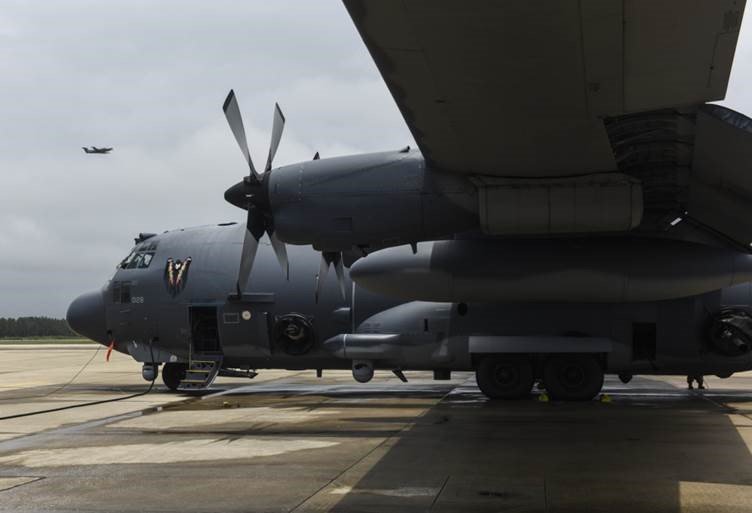
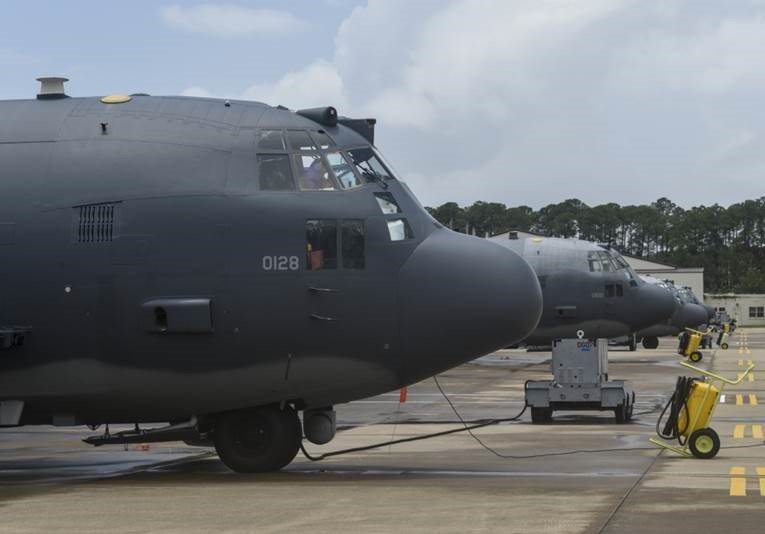
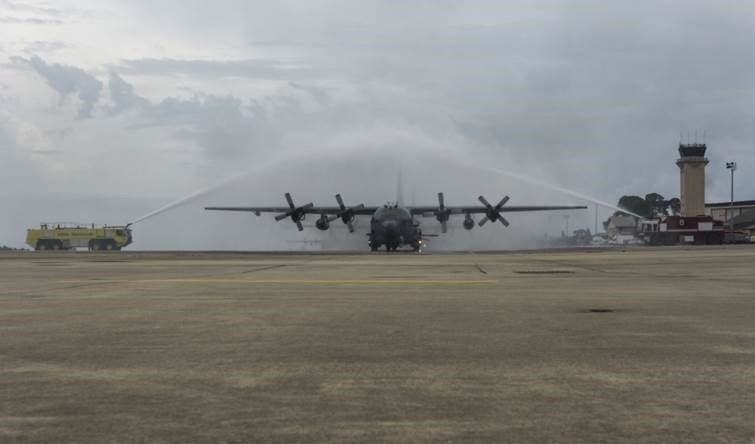
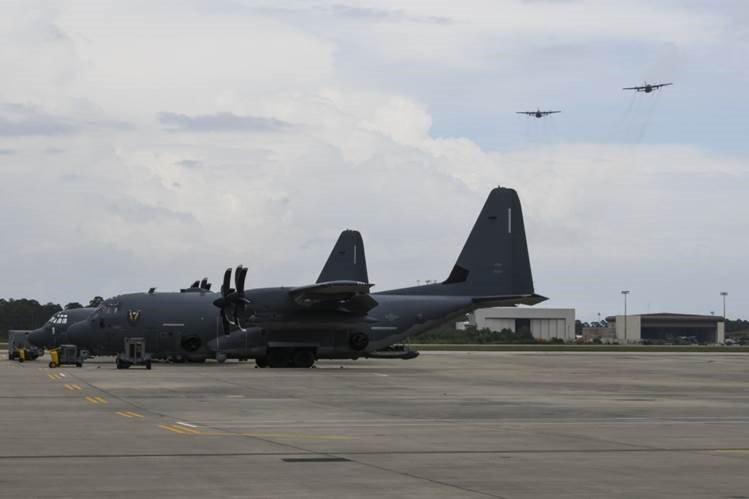
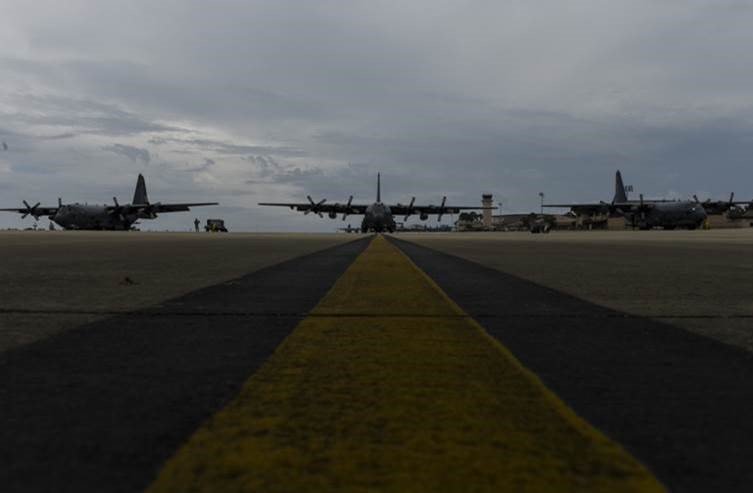


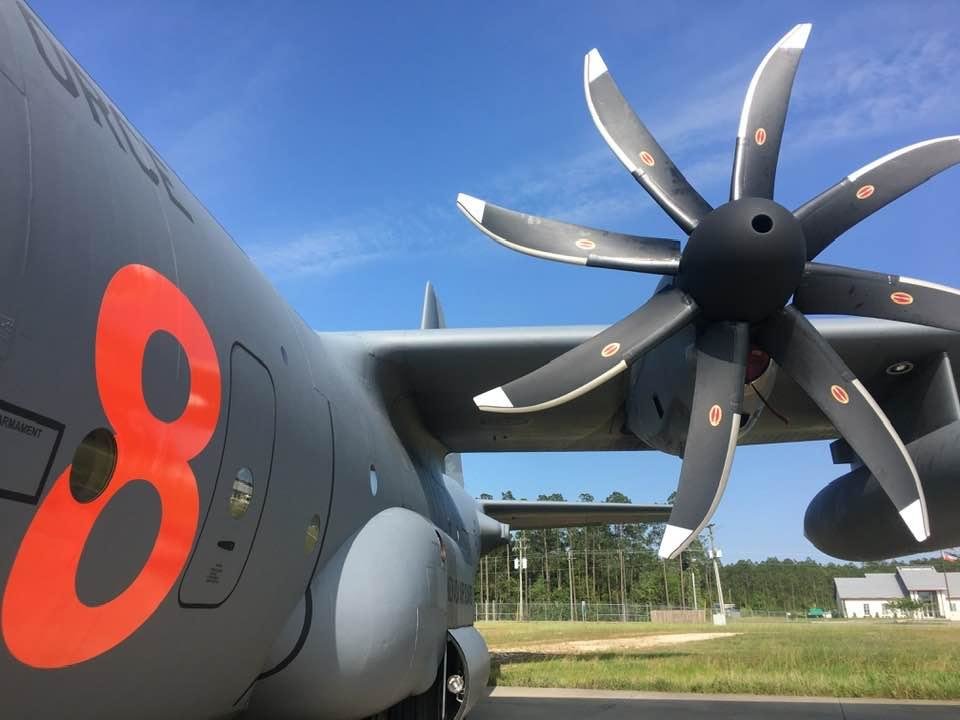
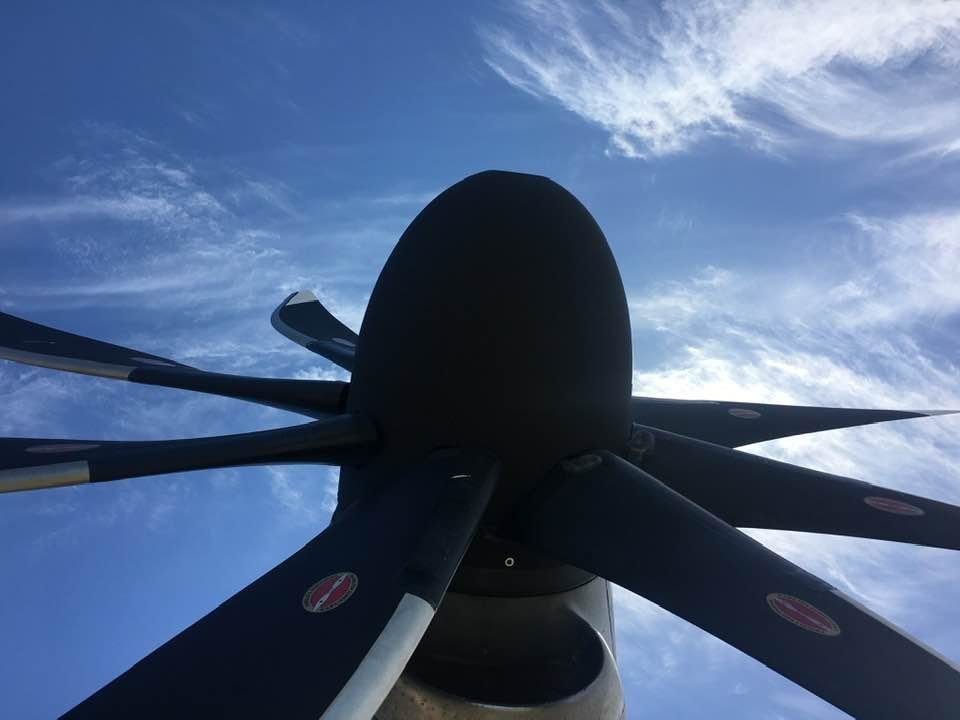
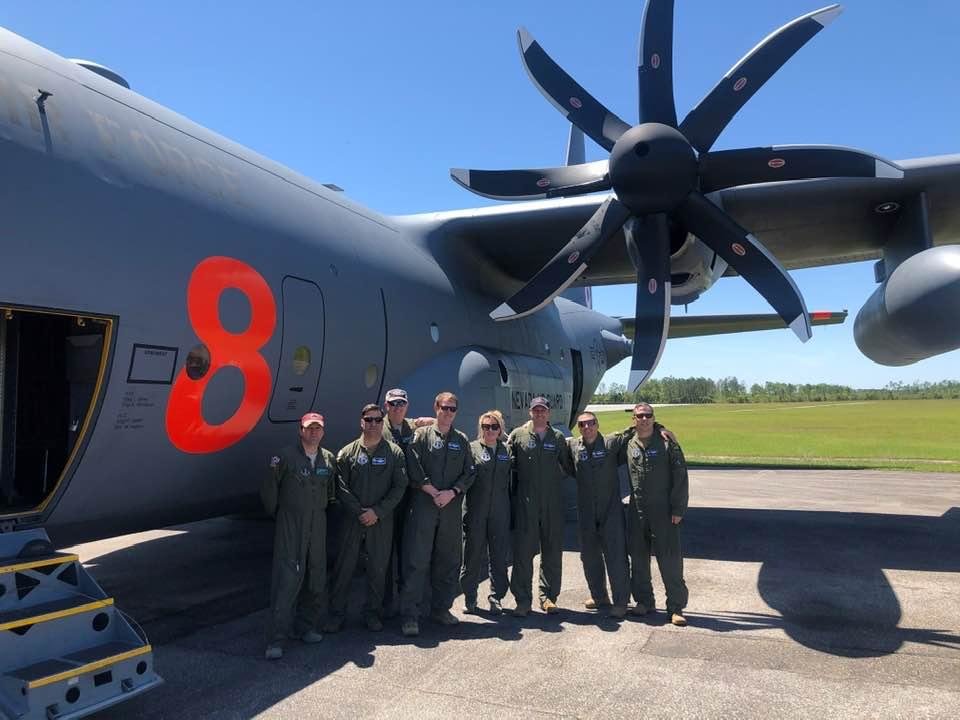
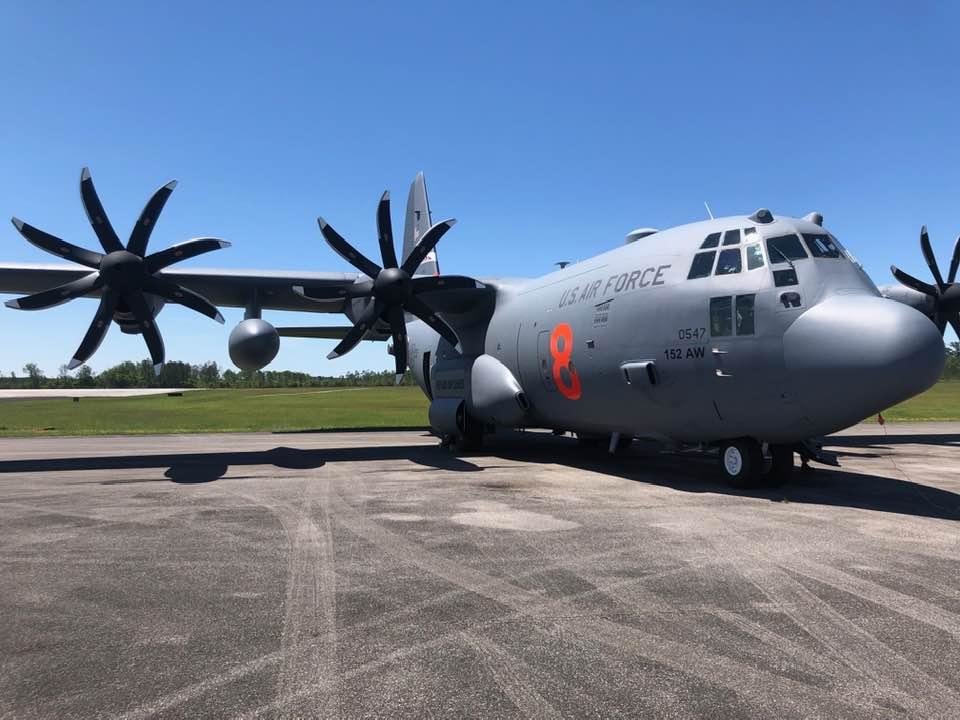
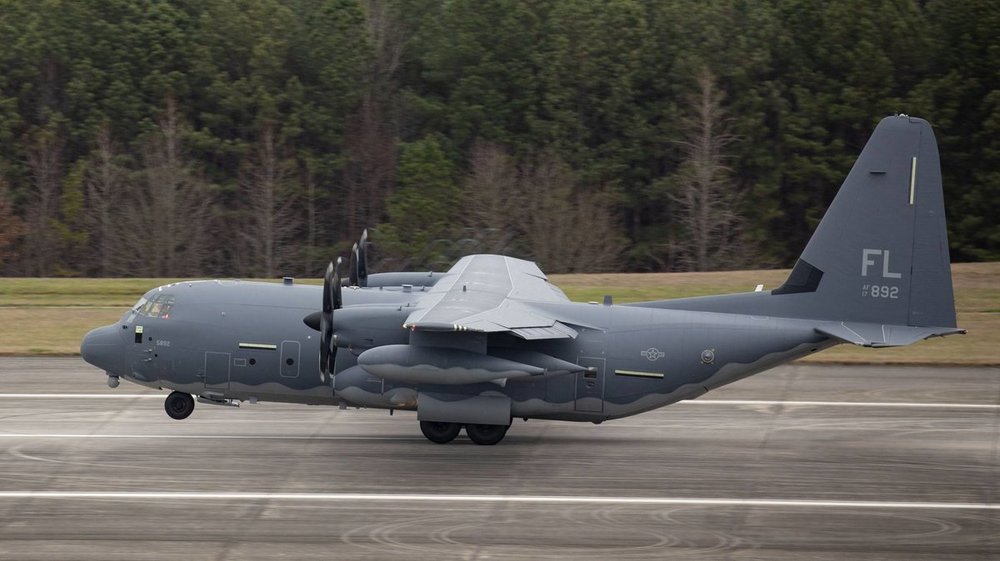






NESA
in C-130 Technical
Posted
I would think if they are telling to turn it off to avoid cracking, then you would leave it off if it were cracked. Can always submit a TAR/-107 for clear guidance.